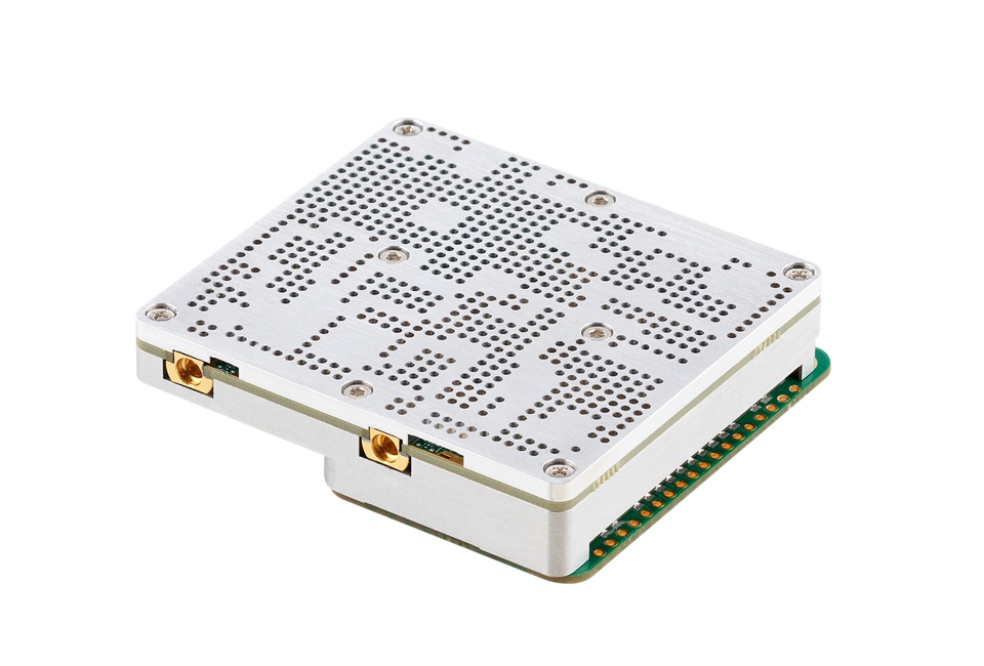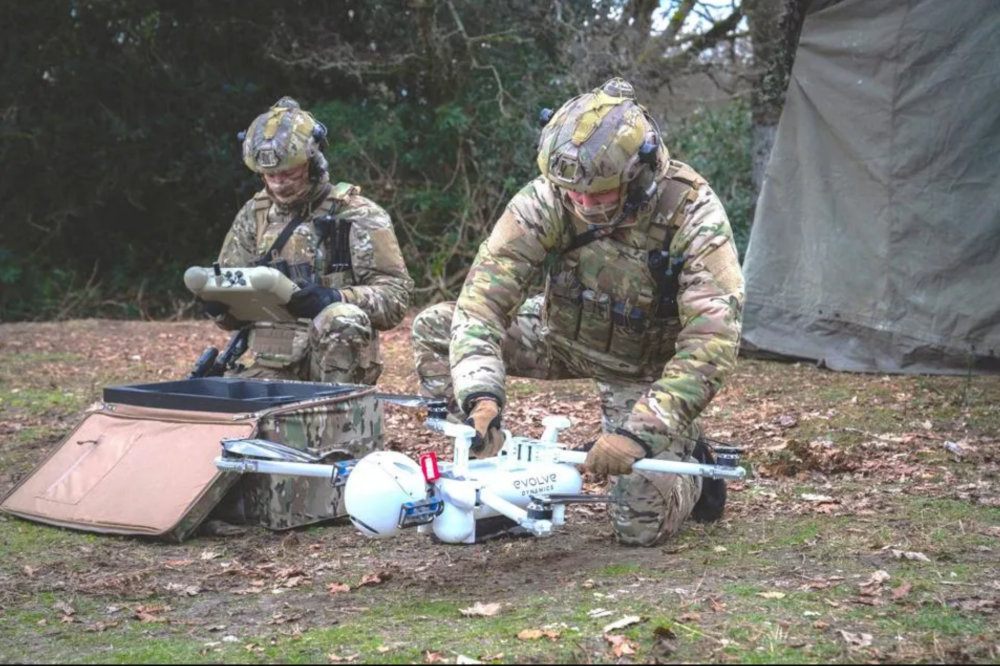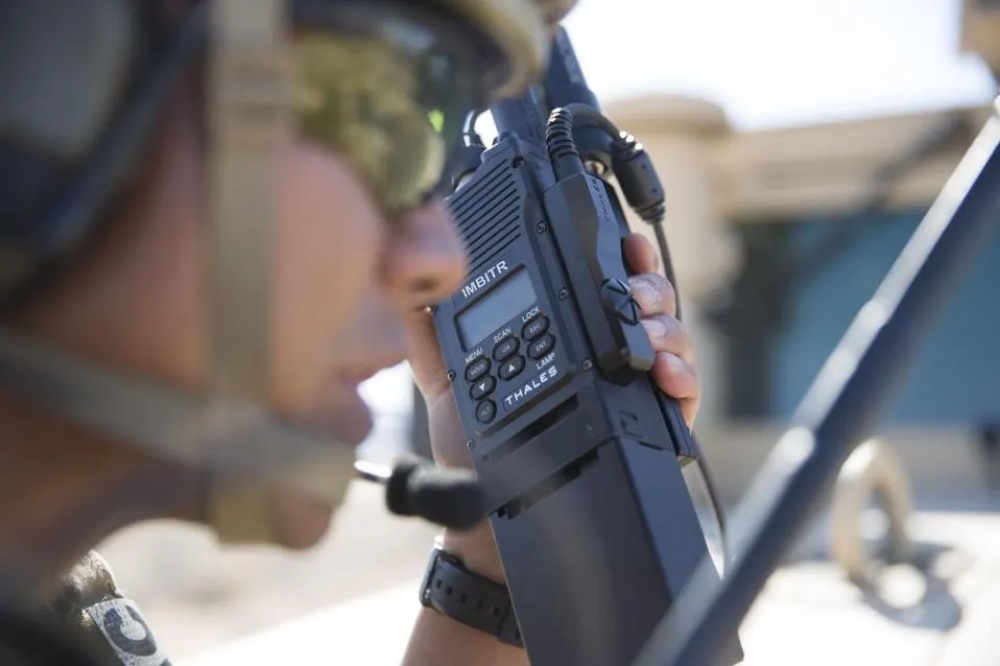A Ukrainian Shark reconnaissance drone resembling a small aircraft flies out over Russian lines, transmitting a stream of high-definition video. The drone searches for valuable targets like ammunition depots, air defense sites and artillery positions deep inside occupied territory.
The Russians respond with electronic warfare, throwing up a wall of radio noise impenetrable to most drones. The Shark flies right on, unaffected by the jamming, thanks to its advanced Mesh Rider radio built by U.S. company Doodle Labs which allows long-range flights through intense interference.
Doodle Labs, based in Marina Del Rey, California has been working with long-range Wi-Fi since 2008, but co-CEO Ashish Parikh told me that they ended up in the military drone communications business almost by accident.
“Everything just came together in 2020,” says Parikh. “The U.S. Army and the Defense Innovation Unit were looking for small, low-cost radios for drones and we just happened to have all the right technologies.”
Industrial Origins
The Shark from Ukrspecsystems is one of Ukraine’s most effective long-range intelligence-gathering systems
The key to Doodle Labs success is that they are building on a towering base of existing technology. A whole industry has grown up around the 802.11 standards of communication, which underlie WiFi and local area networking. Everything is made to the same standards, which means that companies like Doodle Labs can build their technology on top of it.
“We don’t have to keep reinventing the wheel,” says Parikh. “And 802.11 just keeps getting better.”
Traditional military radio makers build everything themselves, whereas Parikh says they can take advantage of new developments like WiFi7 which launched recently and which promises faster speeds and more robust connections. Basically, they benefit from billions of dollars of industry-wide research rather than doing it all themselves.
Doodle Labs previous work in the industrial sector included providing communications for robotic machinery like autonomous trucks in mines and mobile robots moving goods in warehouses. These tend to be very ‘messy’ environments in radio terms. Some frequencies may be full of traffic from other systems, others will be affected by radio noise and interference from industrial equipment. Communications need to be able to cope and provide a rapid, seamless link.
Parikh says there are three basic approaches to dealing with radio interference, and they use all of them. One is filtering, so that the receiver can block out everything except the exact wavelength being used to communicate. Another is using multiple bands and the third is hopping to a different band where these is no interference.

Doodle Labs’ mini Mesh Rider Radio. It measures 46 x 51 x 6.5 mm and weighs 36g, slightly over an ounce. DOODLE LABS
The same approaches, with some refinements, apply to the problem of countering jamming. But while military developers typically build everything themselves from the ground up with their own proprietary systems, with all the costs and development time that entails, Doodle Labs are building on existing standards. Parikh says they use commercial Qualcomm chips and the Linux operating system, although people had previously told him this would never work in the defence sector.
“Seeing what’s now happening, and the need to respond and move fast, all of a sudden our approach is being appreciated,” says Parikh. “I feel a sense of validation.”
The Need For Speed
The conflict in Ukraine has seen electronic warfare moving at an unprecedented pace. As the drone war escalated from a few thousand to literally millions of drones, both sides have turbocharged their efforts to jam opposing communications.
Drones like the ubiquitous kamikaze FPVs and ‘Mavik’ scouts are hard to stop, and defenders often rely on jamming. This can be a matter of breaking the control link, blocking the video feed, or jamming satellite navigation. The electronic warfare contest has turned into a cat-and-mouse game of developments where each innovation in jamming is met with a new move in countermeasures.
The pace of change seems to have found some U.S. suppliers unprepared. The Wall Street Journal reported on April 10th on poor results by Skydio drones, which although built to U.S. Army specifications, had problems in the intense jamming environment.
“Ukrainian officials have found U.S.-made drones fragile and unable to overcome Russian jamming and GPS blackout technology. At times, they couldn’t take off, complete missions or return home,” according to the WSJ. “American drone company executives say they didn’t anticipate the electronic warfare in Ukraine.”
By contrast Doodle Labs did anticipate the electronic warfare and have been winning it from the start, but only by rapid innovation.
“Resistance to jamming is the number one requirement from our defense customers at present,” says Parikh. “There are changes to the electronic warfare landscape on a monthly basis, and a rapid release cycle is required to beat the jammers.”




